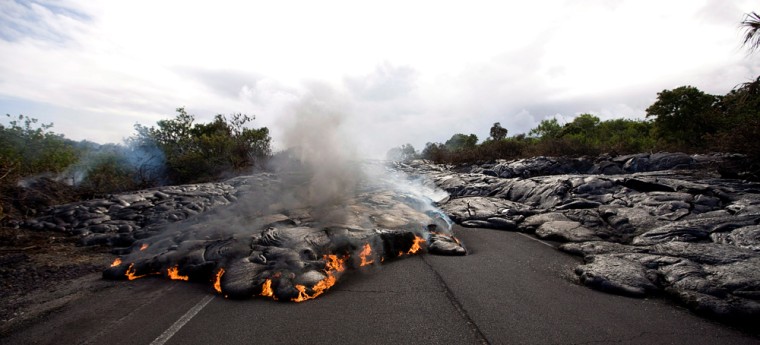Elevated sulfur dioxide levels from Kilauea volcano and a change in wind direction forced 2,000 people to leave Hawaii Volcanoes National Park on the Big Island.
The park was closed, and those at campgrounds, the Kilauea Military Camp as well as the guests and staff at the 42-room Volcano House hotel were told to leave, Chief Ranger Talmadge Magno said Tuesday.
The Hawaii County Civil Defense also recommended evacuations of five communities outside the park. One school, Volcano Charter, was closed.
A voluntary evacuation was ordered in the communities of Mauna Loa Estates, Ohia Estates, Volcano Village, Keauhou Ranch and Volcano Golf Course Subdivision. It was unknown how many residents left their homes.
"As far as we know the number was light because the sulfur dioxide levels really did not materialize to the degree that was much anticipated," Hawaii County Mayor Harry Kim said. "What did happen during the day is that we did have some ... brief periods of high levels of sulfur dioxide in the affected areas, mainly in the national park areas."
Those evacuated from the park were transferred to hotels in Hilo, he said.
No one had taken advantage of an emergency shelter, which would remain open until wind direction improved, Kim said.
Magno said park officials would determine whether the park should reopen Wednesday morning after reviewing the latest weather forecasts.
There were no reports of illness associated with the sulfur dioxide. Elevated levels of the gas could cause breathing problems, especially among those with respiratory conditions such as asthma, emphysema and bronchitis.
The volcano, which has been erupting since Jan. 3, 1983, began venting elevated levels of sulfur dioxide from Halemaumau Crater, located atop the volcano, in mid-March.
